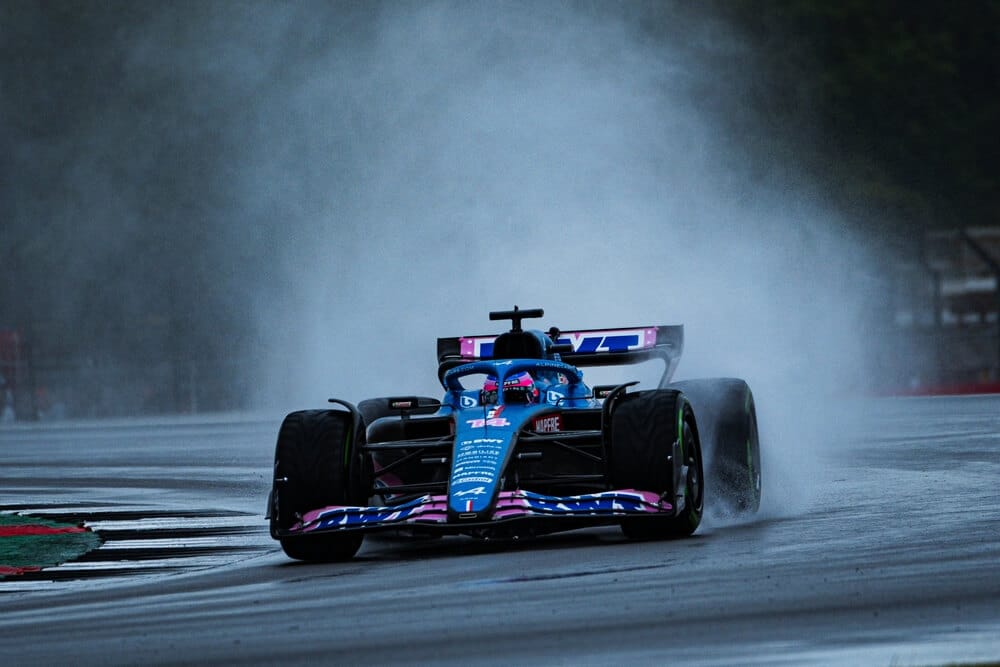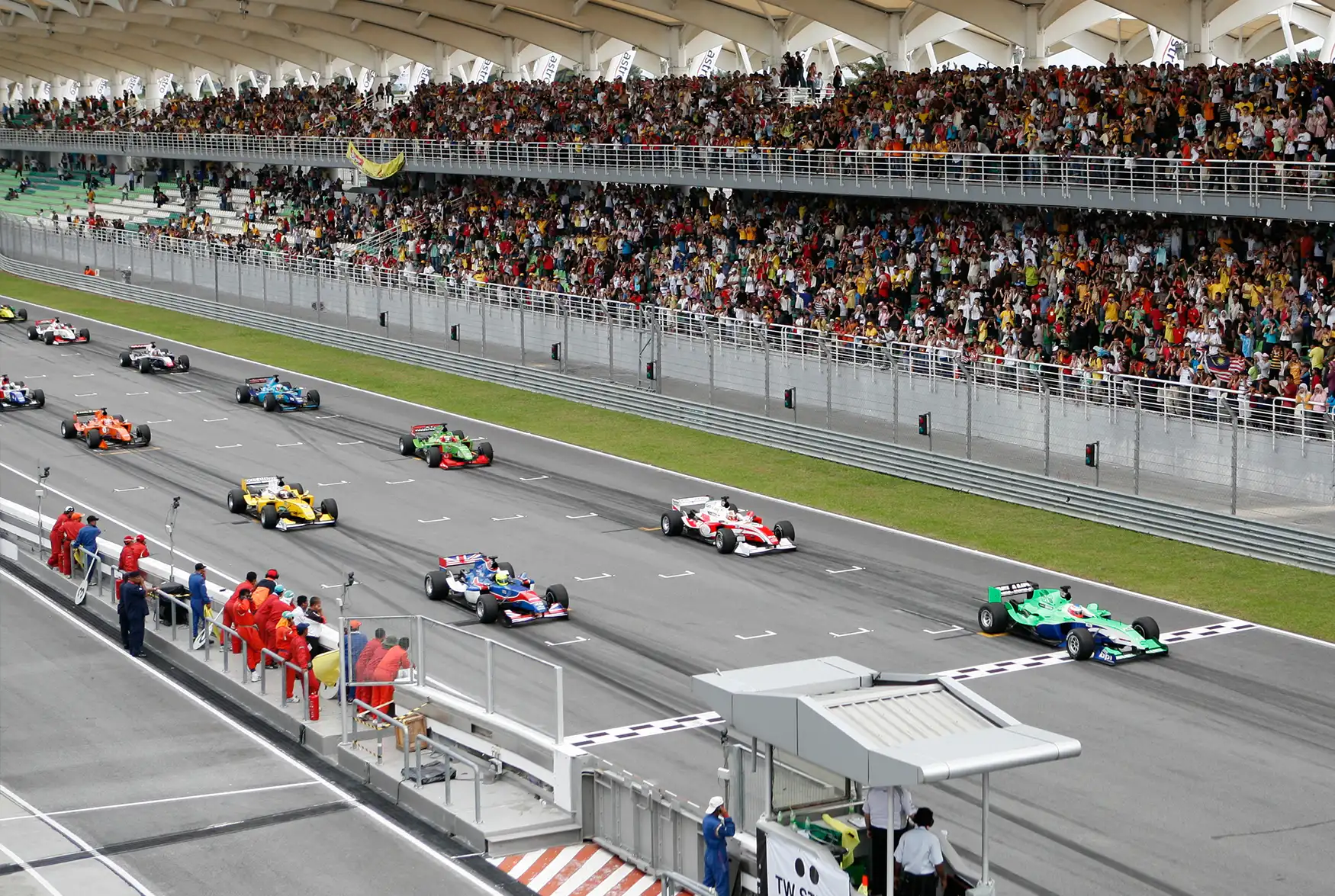The advancement of technology has seen Formula 1 embrace the use of telemetry to provide detailed information about a race car’s performance during a race.
Telemetry is the science of measuring, recording, and transmitting a vehicle’s motion data. In Formula 1, telemetry provides unprecedented detail about every aspect of a driver’s performance. From their driving style and speed to the exact settings of their car. This data is used to identify a car’s weaknesses and develop strategies that can help drivers achieve the best possible performance from their vehicles.
This article will discuss telemetry, how it works, and its importance in Formula 1. It will also examine how this technology has revolutionized the sport and made Formula 1 an even more thrilling spectacle for drivers and spectators.
Table of Contents
Watch this video to learn more about telemetry in F1.
What is Telemetry in Formula 1?
Telemetry in Formula 1 allows teams to gather real-time data from their cars and analyze it to maximize performance. This technology collects information from sensors within the car and transmits it to the engineering team. It helps them identify any weaknesses or problems to get the most out of their vehicles.
How it works in F1
Telemetry in Formula 1 works by gathering real-time data from the car’s sensors and transmitting it wirelessly to the engineering team.
This gives them access to valuable information such as speed, engine revs, fuel consumption, tire pressure, and temperature. With this data, they can make accurate decisions on race strategy. They also provide feedback for drivers, and identify any potential mechanical issues.
Examples of data collected through telemetry
Telemetry in Formula 1 allows teams to get up-to-the-minute data from their cars. It enables them to make informed decisions and optimize performance. This technology can measure everything from a driver’s lap time and position on the track to tire pressure, temperature, and wear.
It also helps detect damage to the engine, gearbox, and wings, providing crucial insight into the car’s condition. Using this data, teams can decide when to pit and how to adjust their car for maximum performance throughout a race.
Key Takeaways
Here are some key aspects that you should know regarding telemetry in formula 1:
- Telemetry is the science of measuring, recording, and transmitting a vehicle’s motion data.
- In Formula 1, telemetry provides detailed information about every aspect of a driver’s performance.
- Telemetry in Formula 1 allows teams to gather real-time data from their cars and analyze it to maximize performance.
- This technology collects information from sensors within the car, transmits it to the engineering team, and helps them identify any weaknesses or problems.
- Telemetry can measure everything from a driver’s lap time and position on the track to tire pressure, temperature, and wear.
- Using this data, teams can decide when to pit and how to adjust their car for maximum performance throughout a race.
Why telemetry is important in F1
With the help of over 200 sensors located in the car, telemetry can provide a much more objective view of a driver’s performance than ever before.
Telemetry data is crucial for achieving the best possible performance from a Formula 1 car. Before a race, this data is used to test and configure the car for optimal performance. During the race, teams can use it to develop strategies and identify possible ways of enhancing their equipment as the driver progresses.
With telemetry, teams have access to all the necessary information needed to make informed decisions and improve performance – helping them achieve victory on the track.
How telemetry helps drivers
This amazing tool not only does help teams and engineers analyze data to improve their car’s performance, but it also gives drivers valuable insights on how to drive faster, smarter, and safer.
Telemetry data offers a wealth of information that can benefit F1 drivers and teams alike. With its help, engineers can assess the performance of various car components and help drivers refine their driving style for better lap times.
Real-time feedback also enables drivers to adapt to changing track conditions and manage tire wear, fuel consumption, and technical issues. It can also be used to develop and adjust race strategies, such as choosing the optimal moment for a pit stop or pushing for a faster lap.
Telemetry can also be used to monitor the car’s status and alert teams of potential hazards. This helps enhance driver safety, preventing accidents or technical failures before they become critical.
Lastly, data collected from different drivers and sessions can be compared to identify patterns, assisting drivers in learning from each other’s performances and making continuous improvements.
The impact telemetry has had on the sport
Telemetry has been a driving force in the world of Formula One racing for decades, and its impact on teams is remarkable. Through its combination of sensors, ECU, and telemetry links, F1 teams are able to monitor the car’s performance with greater accuracy than ever before.
The data collected by these components helps engineers analyze the car’s performance in real time, enabling them to detect potential issues before they cause significant damage. It also provides drivers with valuable insights into improving their driving style and adapting to changing track conditions.
The sheer number of sensors used in an F1 car can present a challenge, as racing conditions like heat and vibration can affect the accuracy of measurements. To address this, manufacturers are developing components with reduced design errors to ensure reliable data acquisition accuracy.
Overall, telemetry has revolutionized Formula One racing, allowing teams and drivers to get the most out of their cars while ensuring the utmost safety on the track. With its help, teams can make more informed decisions, maximize efficiency, and ultimately strive for success.

The evolution of telemetry in Formula 1
The evolution of telemetry in Formula One Racing has been rapid and revolutionary. Early on, there was limited interaction between the driver and the engineers, with teams relying more on the driver’s feedback than data.
The best teams could do keep track of lap times. Fast forward to today, and telemetry has allowed for the car setup to be altered while the driver is in the middle of a race, and messages can even be sent directly to their dashboard during it!
At first, data was used more to check that engines were working correctly and that other fundamental parts of the car were functioning fine. But now, teams are using performance data to make their cars faster. This includes brake and tire temperatures, how the driver manages throttle and brake usage, as well as chassis balance and steering wheel controls. All these factors help improve race performance by optimizing them in one way or another.
Though telemetry has come a long way, one of the major challenges that still exists is getting the right information at the right time. This requires quick responses with accurate data, which makes having resources like NetApp (particularly used by Aston Martin) is invaluable to teams. Ultimately, this technology gives drivers access to faster cars and heightened performance during races.
Controversies surrounding telemetry in F1
Although telemetry is widely accepted in Formula One Racing, it had its fair share of controversies.
Arguments for and against telemetry
Let’s take a look at the argument for and against telemetry:
Argument for
The argument for telemetry in Formula One Racing is that it adds a layer of safety and performance optimization. Drivers can gain real-time feedback while on the track to make better decisions or prepare for upcoming turns. This helps them become more efficient and effective during races.
In addition, teams can use data collected from telemetry to analyze the car’s performance and make adjustments on the fly. Engineers can detect potential issues with components before they lead to costly repairs or accidents. Ultimately, telemetry helps ensure the safety of drivers and improves race performance on a technical level.
Argument against
The argument against telemetry in Formula One Racing is that it takes away from drivers’ skills and natural abilities. By relying on data to make decisions, drivers may become overly reliant on technology instead of trusting their own instincts when driving. This could lead to decreased creativity, as drivers could become too dependent on telemetry regarding race strategy.
Another argument against telemetry is that it can give teams with bigger budgets an advantage over smaller teams due to the costs associated with developing and using these technologies. Since larger teams have higher resources, they are more likely to have access to and use the best data acquisition systems. This could lead to an uneven playing field, where smaller teams are disadvantaged.
Potential future developments
So, how does the future of Formula 1 Telemetry look? With technology ever-evolving, teams will have access to an even greater range of data, allowing them to make more informed decisions. Using machine learning algorithms and artificial intelligence can help identify patterns that humans would otherwise miss, opening up new opportunities for strategic advancements.
Additionally, improved cybersecurity measures will help ensure teams and governing bodies protect sensitive information and maintain integrity of the sport. All of these developments are set to transform Formula 1 Telemetry into a much more advanced technology than ever before.
Frequently Asked Questions
1. What kind of data is collected through telemetry in Formula 1?
2. How do teams use telemetry to gain a competitive advantage?
3. Are there any controversies surrounding the use of telemetry in Formula 1?
Conclusion
Telemetry in Formula 1 is a valuable tool that helps teams optimize race performance and ensure the safety of drivers. With data acquisition systems collecting information on the car, engineers can make adjustments to components that lead to better performance during races.
Additionally, improved cybersecurity measures will help protect sensitive information and maintain the integrity of the sport. All of these developments are set to transform Formula 1 Telemetry into a much more advanced technology than ever before. Ultimately, telemetry helps improve the sport as a whole and should continue to be an integral part of Formula 1 Racing in the future.
Article sources
Learn more about Formula One
Want to learn more about F1? Then visit our Formula 1 glossary and dictionary.



